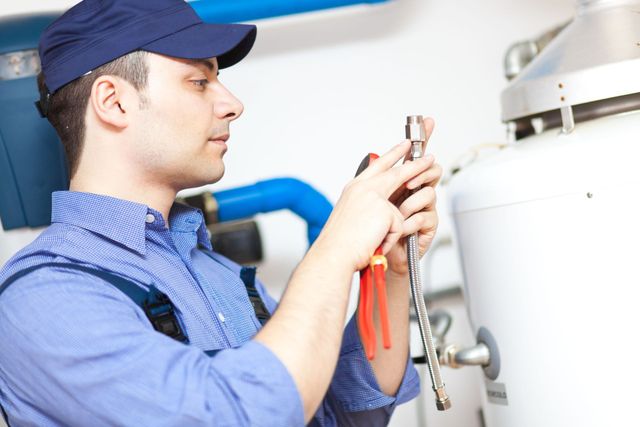How to Properly Maintain Your Home's Hot Water System
How to Properly Maintain Your Home's Hot Water System
Blog Article
This post underneath pertaining to How to Maintain a Hot Water Heater in a Few Simple Steps is relatively engaging. Try it and draw your own conclusions.

Hot water is vital for daily convenience, whether it's for a refreshing shower or cleaning dishes. To ensure your hot water system runs efficiently and lasts much longer, regular maintenance is key. This post gives useful pointers and understandings on how to preserve your home's warm water system to avoid disturbances and costly repair services.
Intro
Maintaining your home's hot water system may appear difficult, but with a couple of simple steps, you can guarantee it runs smoothly for years to find. This guide covers whatever from recognizing your warm water system to DIY maintenance pointers and knowing when to call in specialist aid.
Importance of Maintaining Your Hot Water System
Normal upkeep not just extends the life expectancy of your warm water system yet additionally ensures it runs successfully. Neglecting maintenance can cause lowered performance, higher energy bills, and even premature failure of the system.
Indicators Your Hot Water System Requirements Upkeep
Recognizing when your warm water system requires focus can protect against major issues. Look out for signs such as inconsistent water temperature, weird sounds from the heating system, or rusty water.
Flushing the Water Heater
Purging your hot water heater gets rid of debris accumulation, enhancing effectiveness and lengthening its life.
Monitoring and Replacing Anode Rods
Anode rods prevent corrosion inside the container. Checking and replacing them when worn is vital.
Complicated Problems Needing Professional Aid
Examples include significant leakages, electrical problems, or if your hot water heater is continually underperforming.
Regular Expert Maintenance Benefits
Specialist upkeep can include comprehensive inspections, tune-ups, and ensuring conformity with safety and security requirements.
Examining and Readjusting Temperature Level Settings
Readjusting the temperature level settings ensures optimum performance and safety.
Do It Yourself Tips for Maintenance
You can perform a number of maintenance tasks on your own to keep your warm water system in top problem.
Checking for Leaks
Regularly evaluate pipes and links for leaks, as these can bring about water damage and greater expenses.
Understanding Your Warm Water System
Before diving right into maintenance jobs, it's useful to recognize the fundamental components of your warm water system. Generally, this consists of the water heater itself, pipelines, anode rods, and temperature level controls.
Monthly Upkeep Tasks
Regular month-to-month checks can help capture small issues prior to they escalate.
Checking Pressure Alleviation Valves
Testing the pressure safety valve ensures it works appropriately and avoids excessive pressure build-up.
Insulating Pipes
Shielding warm water pipes minimizes heat loss and can conserve power.
When to Call a Professional
While DIY maintenance is beneficial, some concerns need professional proficiency.
Conclusion
Routine maintenance of your home's warm water system is essential for effectiveness, longevity, and expense financial savings. By adhering to these suggestions and understanding when to look for specialist help, you can ensure a trusted supply of hot water without unexpected interruptions.
How to Maintain an Instant Hot Water Heater
Before tinkering with your hot water heater, make sure that it’s not powered on. You also have to turn off the main circuit breaker and shut off the main gas line to prevent accidents. Also turn off the water valves connected to your unit to prevent water from flowing into and out of the appliance. 2. When you’re done, you have to detach the purge valves’ caps. These look like the letter “T†and are situated on either side of the water valves. Doing so will release any pressure that has accumulated inside the valves while at the same time avoid hot water from shooting out and burning your skin. 3. When the purge valves’ caps are removed, you have to connect your hosing lines to the valves. Your unit should have come with three hoses but if it didn’t, you can purchase these things from any hardware or home repair shops. You can also get them from retail stores that sell water heating systems. Read the user’s manual and follow it to complete this task properly. When the hosing lines are connected, open the purge port’s valves. 4. You should never use harsh chemical cleaners or solutions when cleaning your unit. Make use of white vinegar instead. It should be undiluted and you’ll probably use about 2 gallons. 5. Now flush your water heater. This task should probably take about 40 minutes. We can’t give you specific directions for this because the procedure is carried out depending on the type, model and brand of your heater. With that being said, refer to the user’s manual. 6. When you’re done draining the unit, you have to turn off the purge port valves again. Remove the hosing lines that you earlier installed on each of the water valves. Put the valve caps (purge port) back in their respective places and be very careful so as not to damage the rubber discs that are found inside these caps. 7. Now that everything’s back in place, check your user’s manual again to find out how to reactivate your water heating system. 8. Once it is working, turn one of your hot water faucets on just to let air pass through the heater’s water supply pipes. Leave the tap on until water flows smoothly out of it. https://www.orrplumbing.com/blog/2014/september/how-to-maintain-an-instant-hot-water-heater/

As an avid reader about Water Heater Maintenance Tips You Can't Afford to Forget, I was thinking sharing that short article was a great idea. Feel free to take the opportunity to distribute this blog entry if you liked it. Thanks a lot for your time. Come back soon.
Learn More Report this page